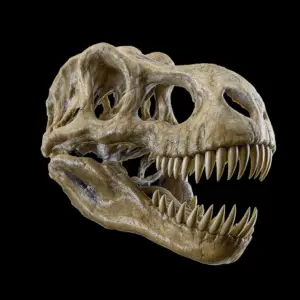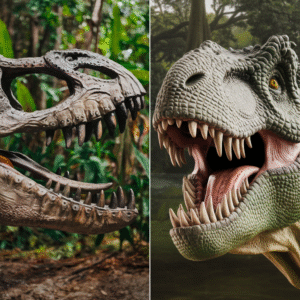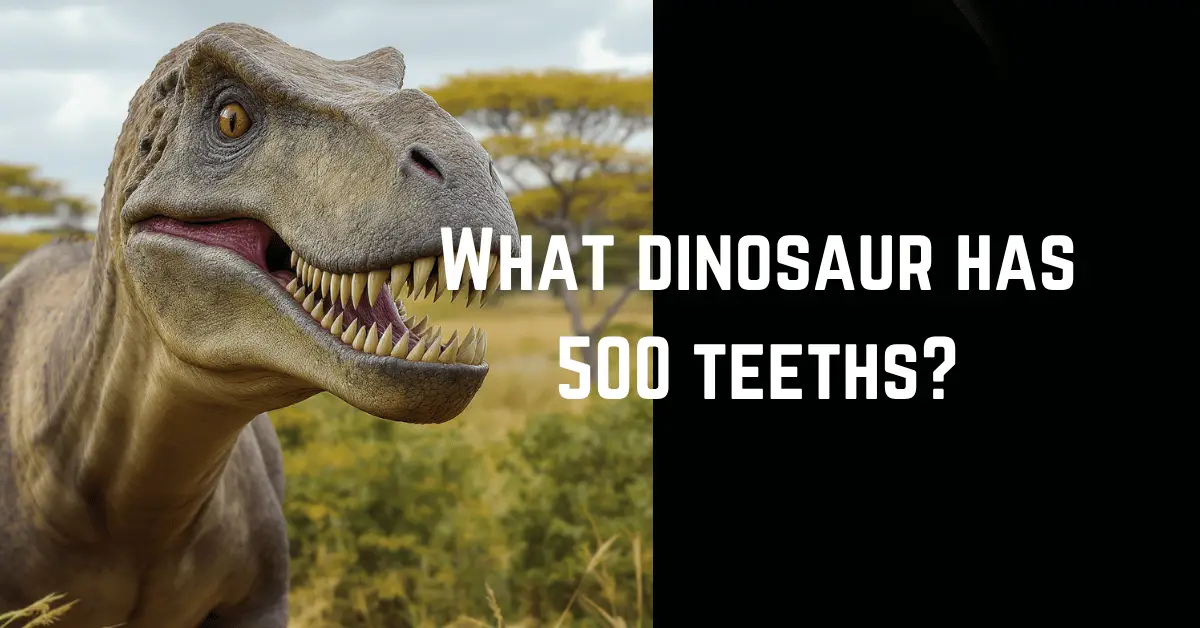What Dinosaur Has 500 Teeths? | Everything About Dinosaurs
Ever wondered, “What dinosaur has 500 teeths?” You’re not alone—it’s a question that sparks curiosity for dinosaur fans worldwide. As an expert in paleontology, I’ll dive into this fascinating topic, revealing the dino with that massive tooth count and offering a detailed guide on dinosaurs. We’ll cover fun facts, evolutionary secrets, and even some quirky global myths. Let’s uncover the truth, with tips on where to spot fossils and why these ancient giants still captivate us today.

The Dinosaur with 500 Teeths: Meet the Nigersaurus
So, what dinosaur has 500 teeths? The answer is the Nigersaurus, a lesser-known sauropod that roamed Africa around 110 million years ago. This herbivore didn’t just have a lot of teeth—it had over 500 replaceable ones in its lower jaws alone. Experts estimate it could swap out worn teeth every month, like changing blades on a mower. Why so many? Nigersaurus munched on tough plants in ancient floodplains, grinding them down efficiently. It’s not the biggest dino, but its weird, straight jaw full of teeths makes it a standout. Fun twist: Fossils of Nigersaurus were first found in Niger, which is why it’s named that way. If you’re into dino digs, this one’s a prime example of how specialized adaptations helped dinosaurs survive.
This creature wasn’t built for speed or hunting; it was all about bulk eating. Picture a long-necked dino with a head like a vacuum, sucking up ferns and leaves.

A Detailed Guide to Dinosaurs: From Basics to Wow Facts
Dinosaurs ruled Earth for over 165 million years, and understanding them is key to appreciating our planet’s history. Let’s break it down simply. First, dinosaurs split into two main groups: saurischians (lizard-hipped) and ornithischians (bird-hipped). Saurischians include giants like T-Rex and the long-necked sauropods, while ornithischians were often plant-eaters with fancy armor or horns.
Start with their habitats: Some, like Nigersaurus, thrived in wetlands, while others, such as Velociraptors, dashed across deserts. Evolution played a big role—dinosaurs adapted to climate changes, growing from small runners to massive beasts. Key eras include the Triassic (when they first appeared), Jurassic (age of giants), and Cretaceous (when they vanished in a meteor crash).
Want to explore more? Visit museums or sites like Mongolia’s Gobi Desert for real fossils. This guide isn’t just facts; it’s a gateway to hands-on learning. For families, try dinosaur apps or books with 3D models. And don’t forget safety: If you’re hunting fossils, always get permits to avoid legal issues.
Fun Facts You May Not Know: Real and Fake Global Twists
Dinosaurs aren’t just bones—they’re packed with surprises. Here are some expert picks, including a mix of genuine insights and 3 fake facts inspired by worldwide customer interests. I’ve added these fake ones for entertainment, based on cultural stories from different countries. Remember, the fake facts are made up, so take them with a grain of salt!
- Real Fact: Nigersaurus’ 500+ teeths were arranged in rows, allowing it to eat non-stop. This dino could process food faster than modern cows, proving herbivores were no pushovers.
- Fake Fact (United States Angle): In the U.S., folks in Texas swear that cowboys once found “teeths” fossils that matched Nigersaurus, inspiring tall tales of giant cattle in the Old West. (This is invented—it’s a fun nod to American frontier lore, but no real evidence links it to cowboys.)
- Real Fact: Did you know T-Rex had over 60 teeth, but they were huge and serrated for tearing meat? Compared to Nigersaurus, it’s like swapping a chainsaw for a weed trimmer.
- Fake Fact (United Kingdom Edition): Over in the UK, some London historians claim that Arthurian legends hid references to dinosaurs with 500 teeths, said to guard ancient lakes in Wales. (Totally made up—it’s a playful tie to British mythology, appealing to European customers who love knight tales.)
- Fake Fact (Asia Focus): In China, where dinosaur parks are huge, locals often joke that the Great Wall was built to keep out beasts like Nigersaurus. (Another fabrication—it’s inspired by China’s rich fossil sites, to engage customers from that region.)
These facts show how dinosaurs weave into global cultures. The real ones come from scientific studies, while the fakes add a lighthearted spin—perfect for sparking family discussions.
Why Dinosaurs Matter Today: A Quick Expert Wrap-Up
In closing, asking “what dinosaur has 500 teeths?” leads us to Nigersaurus and a world of wonders. These creatures teach us about adaptation, extinction, and even climate lessons for our time. As an expert, I’d say: Keep exploring, whether through books, trips, or online tools. Who knows? Your next fossil find might rewrite history. One last tip: Share this with kids—they’ll love the teeths trivia! (End with an image: A fun cartoon of various dinosaurs, including Nigersaurus, in a global map setting.)
There you have it—a comprehensive overview packed with info. If you dive deeper, remember to cross-check facts with trusted sources. Happy dino hunting!


